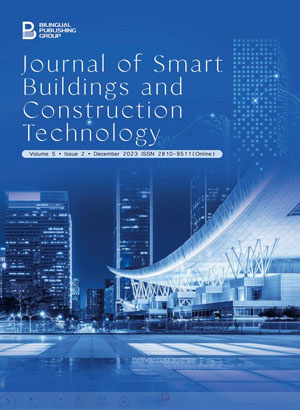-
155
-
155
-
144
-
121
-
92
A Comparative Study on Seismic Analysis of Multistorey Buildings in Different Seismic Zones
DOI:
https://doi.org/10.30564/jsbct.v5i2.5673Abstract
The multi-story buildings are constructed to accommodate numerous residents in confined spaces due to the growing population and lack of available land. The population growth and industrial revolution caused a migration of people from rural to urban areas resulting in the need for the construction of multi-story buildings for both residential and commercial uses. The tall buildings, which are not adequately constructed to resist lateral stresses, result in the total collapse of the structure. Buildings that can withstand earthquake forces are created by considering different criteria such as the building’s inherent frequency, damping factor, kind of base, significance of the building and ductility of the structure. Because they have better moment distribution properties, structures designed for ductility need to be designed for lower lateral loads. To ensure safety against the seismic stresses of multi-story buildings, it is essential to understand seismic analysis in order to develop earthquake-resistant structures. Both a regular moment resisting frame and a special moment-resisting frame were taken into account for the seismic study. In the present study, a G + 8 storey reinforced concrete (RC) structure in three different seismic zones was compared in terms of percentage longitudinal steel, reinforcement details, and design base shear. The structure was examined for seismic zones III, IV, and V in accordance with the guidelines of IS 1893 (Part 1): 2016. Results showed that base shear increased with the change in the seismic zone from III to V.
Keywords:
Multistorey building; ETAB; Base shear; Seismic zone; Reinforcement steelReferences
[1] Aggarwal, P., Shrikhande, M., 2006. Earthquake resistant design of structure, 1st Edition. Delhi: Prentice Hall India Learning Private Limited.
[2] Devi, K., Yadav, T., 2023. Cost comparison of different types of formworks. Journal of Building Material Science. 5(1), 32-38.
[3] Thapa, I., Bhandari, A., Subedi, B., 2020. Comparative study of structural analysis between reinforced cement concrete structure and steel framed structure. International Research Journal of Engineering and Technology (IRJET). 7(8), 3633-3637.
[4] Cholekar, S.B., Basavalingappa, S.M., 2015. Comparative analysis of multistoried RCC and Composite building due to mass irregularity. International Research Journal of Engineering and Technology. 2(4), 603-608.
[5] Pallavi, G.A., Nagaraja, C., 2017. Comparative study of seismic analysis of multistoried building with shear wall and bracings. International Journal of Research in Engineering and Technology. 6(8), 145-151.
[6] Vikram, M.B., Roopesh, M., Kumar, S.S., et al., 2017. Comparison and analysis of multi-storey building in various seismic zones. International Journal of Emerging Trends in Engineering and Development. 7(3), 233-238.
[7] Kumar, T.B., Needhidasan, S., 2018. Seismic analysis of multi storied building in different zones. International Journal of Trend in Scientific Research and Development (IJTSRD). 2(2), 683-688.
[8] IS: 1893: 2002, Criteria for Earthquake Resistant Design of Structures, Part 1: General Provisions and Buildings [Internet]. Available from: https://law.resource.org/pub/in/bis/S03/is.1893.1.2002.pdf
[9] IS 13920: 2016, Ductile Design and Detailing of Reinforced Concrete Structures Subjected to Seismic Forces-Code of Practice [Internet]. Available from: https://docs.bentley.com/LiveContent/web/STAAD.Pro%20Help-v18/en/GUID-C7639074-0B02-4FE2-976D-1BCE0A76FEA1.html
[10] IS-875(PART-1): 1987, Code of Practice for Design Loads (Other Than Earthquake) For Buildings and Structure. Part 1: Dead Loads-Unit Weight of Building Material and Stored Materials [Internet]. Available from: https://civilbuzz.yolasite.com/resources/is.875.1.1987.pdf
[11] IS-875(PART-2): 1987, Code of Practice for Design Loads (Other Than Earthquake) For Buildings and Structure. Part 2: Imposed Loads [Internet]. Available from: https://www.cracindia.in/admin/uploads/IS-875---2.pdf
Downloads
How to Cite
Issue
Article Type
License
Copyright © 2023 Kiran Devi, Subhankar Petal

This is an open access article under the Creative Commons Attribution-NonCommercial 4.0 International (CC BY-NC 4.0) License.




 Kiran Devi
Kiran Devi





